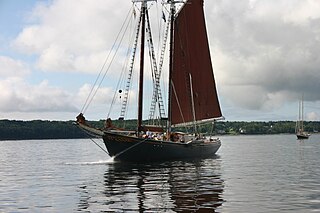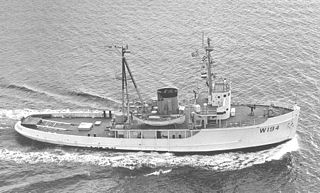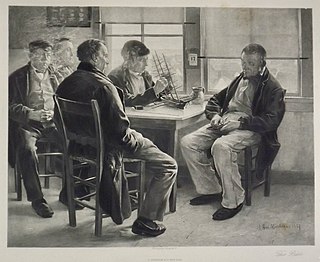| Agency overview | |
|---|---|
| Formed | February 25, 1850 |
| Headquarters | 660 Davis Street, San Francisco, CA 94111 |
| Employees | 4 permanent full-time staff, contractors |
| Annual budget | $2.5 million (2017-18) |
| Agency executive |
|
| Website | http://www.bopc.ca.gov/ |
Board of Pilot Commissioners for the Bays of San Francisco, San Pablo, and Suisun is the California state agency responsible for licensing and regulating pilots within one of the largest harbors in the world and the tributary Sacramento River delta. It licenses and regulates up to 60 pilots of the San Francisco Bar Pilots Association. [1] They are called "bar pilots" because they maneuver ships across a large and dangerous sand bar just outside the Golden Gate at the mouth of San Francisco Bay.
The Board of Commissioners was created in 1850 during the first session of the California State Legislature. Once an independent agency, the Board of Commissioners became a department of the California Business, Transportation and Housing Agency in 2009 and currently is part of the California State Transportation Agency. Surcharges paid by shippers on pilotage fees finance the work of the Commission, making it completely self-supporting.
The commission's jurisdiction includes all of the bays and ports in the San Francisco Bay area, and the tributaries up to the ports of Stockton and Sacramento, and Monterey Bay. Pilots on other California waters operate under the authority of their federal (US Coast Guard) pilot’s license. Port of Los Angeles pilots are municipal employees. Port of Long Beach pilots work for a private contractor. Pilots in the ports of Humboldt Bay, San Diego, and Port Hueneme are commissioned or contracted with by their respective port authorities or districts. San Francisco bar pilots are required to hold Coast Guard licenses in order to be licensed by the Board of Pilot Commissioners.
The commission has eight members appointed by the governor of California as follows.
The first President of the Pilot Commission was Commander Cadwalader Ringgold, USN.
The Board of Pilot Commissioners does not conduct a pilotage service, nor does it or has it ever owned or operated pilot vessels used by its licensees to board on and off ships. However some of the history of pilot boats used on San Francisco Bay may be of interest to the reader:
Some of the pilot boats used in San Francisco Bay have independent histories. The motorboat USS California was completed in 1910 and served in World War I on harbor patrol duty. The two-masted gaff-rigged schooner California, built as the racing sailboat Zodiac in 1924, was modified for pilot service after being acquired in 1931 by the San Francisco Bar Pilots Association for use as a pilot boat. California served as a pilot vessel until 1972 when the schooner was the last sailing pilot vessel in the United States. The schooner was purchased in 1978 and again named Zodiac. The vessel is one of few surviving sailing pilots still in existence. [2] [3] [4] The two-masted gaff-rigged schooner Adventuress, launched in 1913, also saw service as a pilot boat, and during World War II served with the United States Coast Guard. The Zodiac and Adventuress are both listed with the National Register of Historic Places and are now cruising in Washington state after restorations. [5] [6]
The container ship COSCO Busan struck the fender system of Delta Tower of the San Francisco–Oakland Bay Bridge at 8:30 a.m. on 7 November 2007, causing damage to the ship as well as slight damage to the tower fender system. [7] The ship's hull was breached, with damage to a water ballast tank and two fuel tanks, with approximately 53,653 gallons of fuel oil leaked and environmental contamination from the oil spill. [7] The accident was investigated by the Board of Pilot Commissioners as well as by the US Coast Guard and the National Transportation Safety Board. The investigation by the Pilot Commission found misconduct by the licensed pilot in the form of pilot error in navigating the vessel and moved to revoke the pilot's license. However, the pilot surrendered his license before a hearing was held. The investigations by the Coast Guard and NTSB also found the pilot at fault. Neither investigation faulted the Commission's licensing nor oversight of the pilot in question.
In 2011, the Commission received and accepted a landmark study on pilot fitness, conducted by Dr. Robert Kosnik, B.Sc, M.D., D.I.H. of the University of California, San Francisco. This study formed the basis of new regulations concerning pilot fitness determinations within the jurisdiction of the Board and has the potential to set a new standard worldwide on pilot fitness for duty. [8]

The Golden Gate is a strait on the west coast of North America that connects San Francisco Bay to the Pacific Ocean. It is defined by the headlands of the San Francisco Peninsula and the Marin Peninsula, and, since 1937, has been spanned by the Golden Gate Bridge. The entire shoreline and adjacent waters throughout the strait are managed by the Golden Gate National Recreation Area.

A pilot boat is a type of boat used to transport maritime pilots between land and the inbound or outbound ships that they are piloting. Pilot boats were once sailing boats that had to be fast because the first pilot to reach the incoming ship got the business. Today, pilot boats are scheduled by telephoning the ship agents/representatives prior to arrival.

The second USS Albatross, often seen as USFC Albatross in scientific literature citations, was an iron-hulled, twin-screw steamer in the United States Navy and reputedly the first research vessel ever built especially for marine research.
The West Coast lumber trade was a maritime trade route on the West Coast of the United States. It carried lumber from the coasts of Northern California, Oregon, and Washington mainly to the port of San Francisco. The trade included direct foreign shipment from ports of the Pacific Northwest and might include another product characteristic of the region, salmon, as in the schooner Henry Wilson sailing from Washington state for Australia with "around 500,000 feet of lumber and canned salmon" in 1918.

A maritime pilot, marine pilot, harbor pilot, port pilot, ship pilot, or simply pilot, is a mariner who maneuvers ships through dangerous or congested waters, such as harbors or river mouths. Maritime pilots are regarded as skilled professionals in navigation as they are required to know immense details of waterways such as depth, currents, and hazards, as well as displaying expertise in handling ships of all types and size. Obtaining the title 'maritime pilot' requires being an expert ship handler licensed or authorised by a recognised pilotage authority.

Zodiac is a two-masted schooner designed by William H. Hand, Jr. for Robert Wood Johnson and J. Seward Johnson, heirs to the Johnson & Johnson pharmaceuticals fortune. Hand intended to epitomize the best features of the American fishing schooner. The 160-foot-long (49 m), 145-ton vessel competed in transatlantic races. In 1931 the vessel was purchased by the San Francisco Bar Pilots Association, brought from the Atlantic, modified and placed in service as the pilot vessel California serving as such until retired in 1972.

Adventuress is a 133-foot (41 m) gaff-rigged schooner launched in 1913 in East Boothbay, Maine. She has since been restored, and is listed as a National Historic Landmark. She is one of two surviving San Francisco bar pilot schooners.

Hanjin Venezia, formerly named the Cosco Busan, is a 275 m (902 ft) container ship. On 7 November 2007, it collided with the protective fender of the Delta Tower of the San Francisco–Oakland Bay Bridge in heavy fog. The collision sliced open two of its fuel tanks and led to the Cosco Busan oil spill in San Francisco Bay. She was renamed the Hanjin Venezia after the accident.

Roseway is a wooden gaff-rigged schooner launched on 24 November 1925 in Essex, Massachusetts. She is currently operated by World Ocean School, a non-profit educational organization based in Boston, Massachusetts, and is normally operated out of Boston, Massachusetts and Saint Croix, U.S. Virgin Islands. She was designated a National Historic Landmark in 1997 as the only known surviving example of a fishing schooner built specifically with racing competition as an objective. In 1941, Roseway was purchased by the Boston Pilot's Association to serve as a pilot boat for Boston Harbor, as a replacement for the pilot-boat Northern Light, which was sold to the United States Army for war service.
Alabama is a Gloucester fishing schooner that was built in 1926 and served as the pilot boat for Mobile, Alabama. The Alabama's home port is Vineyard Haven, Martha's Vineyard, Massachusetts. The Alabama is owned by The Black Dog Tall Ships, along with the Shenandoah, and offers cruises of Nantucket Sound.

The Cosco Busan oil spill occurred at 08:30 UTC-8 on 7 November 2007 between San Francisco and Oakland, California, in which 53,569 US gal (202,780 L) of IFO-380 heavy fuel oil, sometimes referred to as "bunker fuel", spilled into San Francisco Bay after the container ship Cosco Busan, operated by Fleet Management Limited struck Delta Tower of the San Francisco–Oakland Bay Bridge in thick fog.

The auxiliary ocean tug USS ATA-194 was laid down on 7 November 1944 at Orange, Texas, by the Levingston Ship Building Co.; launched 4 December 1944; and commissioned at Orange on 14 February 1945, Lieutenant William J. Bryan in command.
San Francisco Bar Pilots Association is the official maritime pilot group for the San Francisco harbor and associated waterways. The pilots in the group are licensed and regulated by California Board of Pilot Commissioners. The Association was created in 1850 and is a member of the American Pilots Association. The association is the oldest purely maritime organization on the Pacific coast of the United States predating the oldest lighthouse in California erected on Alcatraz Island in 1854. The pilots were required by law to maintain a constant round the clock watch with enough pilots aboard a pilot boat on the bar to pilot any arriving ship safely into port.
Rear Admiral (ret.) Craig E. Bone is a former government executive under President George W. Bush, playing a key role in the forwarding of maritime domain awareness works, inter alia the container security initiative and implementation of the Maritime Transportation Security Act, as part of the wider Global Maritime Intelligence Integration Plan of this administration.

Sandy Hook Pilots are licensed maritime pilots that are members of the Sandy Hook Pilots Association for the Port of New York and New Jersey, the Hudson River, and Long Island Sound. Sandy Hook pilots guide oceangoing vessels, passenger liners, freighters, and tankers in and out of the harbor. The peninsulas of Sandy Hook, and Rockaway in Lower New York Bay define the southern entrance to the port at the Atlantic Ocean.
The SS Puerto Rican, was an American-flagged tanker disabled by an explosion on October 31, 1984. The 20,295 GRT, 632 ft (192.6 m), tanker was owned by Bankers Trust Company and operated by Keystone Shipping Co. of Philadelphia which burned in an explosion with the stern section sinking just hours after leaving San Francisco bound for New Orleans with a cargo of 91,984 barrels of lubricating oil and additives. In addition to the cargo the ship was fueled with 8,500 barrels of Heavy Fuel Oil before departure.

The Board of Commissioners of Pilots of The State Of New York is the New York state agency responsible for licensing and regulating pilots within one of the largest harbors in the world. It licenses and regulates up to 75 pilots of the Sandy Hook Pilots. They are called "Sandy Hook pilots" because they maneuver ships across a large and dangerous sand bar along the coast of New Jersey at the southern entrance of Lower New York Bay south of New York City.

Favorite or Favorita, was a 19th-century New York Sandy Hook pilot boat built in the early 1820s. She helped transport New York City maritime pilots between inbound or outbound ships coming into the New York Harbor. Favorite collided with a United States steamer and sank in 1865 near Barnegat Lighthouse.
The Pilots' Association For The Bay & River Delaware is the official maritime pilot group for the Delaware Bay and Delaware River. The association is one of the oldest state pilot organizations in the nation that was founded in 1896. Delaware Bay Pilots are licensed maritime pilots for the Delaware Bay and River. Delaware pilots guide oceangoing vessels, passenger liners, freighters and tankers in and out of the harbor. The Delaware Bay is bordered inland by the States of New Jersey and Delaware, and the Delaware Capes, Cape Henlopen to the south and Cape May to the north, on the Atlantic Ocean.

George Peabody was a 19th-century pilot boat built in Boston, Massachusetts in 1867, for San Francisco pilots. She was in the San Francisco pilot service for twenty-seven years. The Peabody was sold in 1893 to Captain Samuel H. Burtis and sailed to Yokohama, Japan for fishing and Seal hunting. In March 1895, she went ashore off the coast of Japan while working in the sealing trade.
{{cite web}}: CS1 maint: archived copy as title (link)